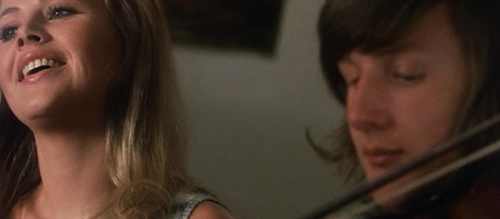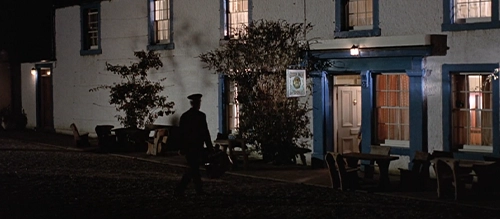10 Best The Wicker Man Moments
Half a century after its release, The Wicker Man (1973) remains one of the most beloved British Horror films ever made. It was released at a time which could arguably be described as the decline of British Horror, a timeline conveniently represented by The Wicker Man‘s biggest star: Christopher Lee. A complete unknown when cast as the monster in Hammer’s first true horror, The Curse of Frankenstein in 1957, he was considered a household name by the time of his appearance in The Wicker Man. The so-called Hammer Horrors which had been the making of Lee’s career were seen as antiquated compared to grittier horror titles such as Night of the Living Dead (1968) and The Texas Chain Saw Massacre (1974).
Considering these other films, it becomes immediately obvious why The Wicker Man enjoys such continued high acclaim: because it’s unique. The Wicker Man is an innovation of the sub-genre of Folk Horror in which fear is derived from our shared past and humanity’s relationship with its surroundings. The Wicker Man is a trailblazer that has been blessed with the highest form of praise, mimicry. It has been subjected to being cheaply knocked off by the 2006 remake starring Nicolas Cage, imitated by the likes of The Village, and paid homage to by recent critically acclaimed horror Midsommar.
The story of devout Christian, Sergeant Howie (Edward Woodward), investigating the reported disappearance of a young girl (Gerry Cowper) on the wildly liberal and pagan Summerisle off the West Coast of Scotland is not just unique but remains chilling. The Wicker Man‘s lack of jump scares and tense atmosphere indicate that the film was a genuine attempt at creating art and not just a quick cash grab, relying on crude methods to illicit shock and controversy. The production’s intellectual and artistic approach to the story of The Wicker Man means its themes not only remain compelling but prove to be relevant to the modern day.
In this Movie List by The Film Magazine, we are bringing attention to the moments in The Wicker Man that best highlight why Robin Hardy’s masterpiece remains the best of both folk horror and British horror.
Follow @thefilmagazine on X (Twitter).
10. The Landlord’s Daughter

As Sargent Howie walks through the door of The Green Man pub, he is clearly disappointed that a routine investigation has transformed into an overnight stay, but he is not yet too perturbed. So far he has found the residents of Summerisle aloof and evasive, particularly over the subject of the whereabouts of Rowan Morrison; but it is what is to be expected from an isolated community and from those involved in possible foul play. It is only after Howie’s introduction to Willow, the daughter of The Green Man’s landlord, that the bizarre nature of Summerisle’s community is revealed as the patrons at the bar all burst into song:
“Much has been said of the strumpets of yore,
Of wenches and bawdy house queens by the score,
But I sing of a baggage that we all adore,
The landlord’s daughter.”
This tribute to both Willow’s beauty and sexual prowess not only reveals the extraordinary sexual liberation of the island but also Howie’s own prudish nature, effectively establishing Howie’s antagonism towards Summerisle’s society. The folk element of the song differentiates The Wicker Man from other horror musicals, creating a tangible relationship with the past and with nature, akin to the storytelling of other world cultures. It is a hint of what is to come, a primordial stirring within our blood.
9. Crying by the Gravestone

Overwhelmed and disgusted by The Green Man’s saucy rendition of “The Landlord’s daughter”, Howie steps outside to take in the fresh air. In the shimmers of the pale moonlight the presence of dozens of couples on the Village Green is revealed, all in the throes of making love. Out of the frying pan and into the fire.
It could be expected that this display of mass public indecency will have lost some of its shock value against contemporary progressive values, but the slow motion reveal with distorted audio is almost chilling (and sensual). The power of the scene can be summarised by the single shot of a naked weeping woman embracing a gravestone. The ultimate gothic aesthetic.
Similar to “Wuthering Heights”, in which Heathcliff desecrates the grave of Cathy to kiss her corpse, The Wicker Man combines horror with eroticism, humanity with the Earth. The Wicker Man was ahead of its time back in 1973 and is still pushing the envelope fifty years on.
Recommended for you: 10 Perfect Horror Movie Double Bills

